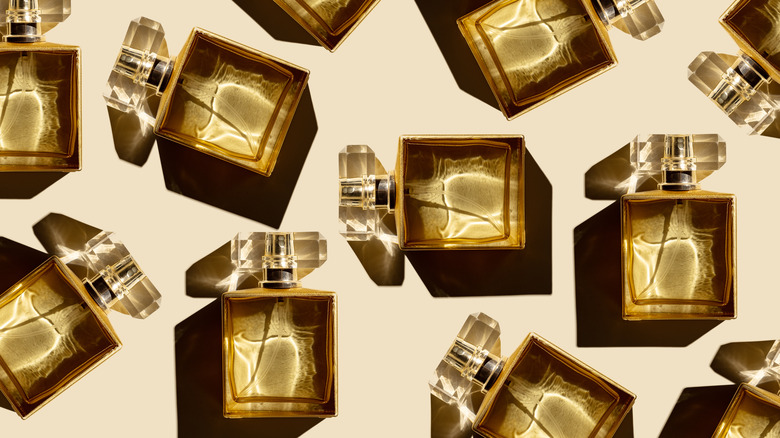Cologne Vs. Perfume: What's The Difference?
There's no doubt that finding a new scent can be a daunting process. With the vast array of lavishly decorated bottles lining the shelves of your local department store, knowing where to start can be a confusing task for many.
While many simply think there are two main types of fragrances out there — colognes and perfumes — the truth is actually much more complicated. Similarly, while many may associate the term "cologne" with masculine fragrances and "perfume" with feminine fragrances, this is actually a common misconception, especially in North America (via The New York Times).
So if you're looking for a new fragrance, don't make the mistake of staying away from colognes because you're assuming they're just for men or avoid perfumes because you're under the impression that they're only for women. In fact, there's a range of products on the market that are suitable for men that are technically labeled as perfumes. But what exactly are the differences between colognes and perfumes? The answer is actually relatively simple.
What is perfume?
The true differences between colognes and perfumes are simply in the strength of the scent, or the concentration of fragrance oils and alcohol (aka "perfume essence") in the bottle. Generally speaking, the higher the concentration, the pricier the product, which is why it's essential to differentiate between the two while choosing a new scent.
Perfume, which is typically referred to in marketing terms as "eau de parfum," simply means that the product contains around 15 to 20 percent concentration of perfume oil, giving it a stronger scent that's supposed to 5 to 6 hours, according to men's grooming and style blog Dapper Confidential. A version that's more difficult to find is labeled as "pure perfume," which is the highest concentration available at 15 to 40 percent. Its potent, transferable scent lasts up to eight hours, and because of its thicker consistency, it comes in stoppered bottles as opposed to sprays like most mainstream fragrances. There's also a commonly sold version called "eau de toilette," which is about 5 to 15 percent concentration, lasts up to five hours, and is typically considered for everyday use.
What is cologne?
Colognes, (aka "eau de cologne") on the other hand, only contain up to 2 to 4 percent of perfume essence and last a maximum of three hours. They tend to be less costly, and also come in bigger bottles because more liquid is needed in order to compensate for their shorter wear time (via Dapper Confidential).
Therefore, there are products in the cosmetics industry labeled as "colognes" that are more feminine in scent, and products labeled as "perfumes" that are more masculine in scent. If you want a masculine scent that lasts longer than a cologne so you don't have to worry about reapplying throughout the day, but are cautious of the label "perfume" because you associate it with femininity, make sure to look for the label "for men," or the French version, "homme," on the bottle. If the fragrance doesn't have this label, it likely means that it's marketed towards women, and therefore more feminine in notes. You learn something new every day!


